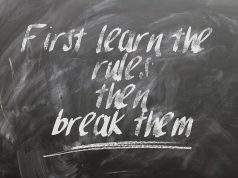In my work with private clients, a prominent theme is movement.
Sometimes, as homework, I tell them to find creative ways to move their bodies: By going for a walk, taking a bike ride, going for a swim, practicing yoga—some form of physical movement every day.
Emotions are energy in motion. When we stop moving, energy starts accumulating, and we start to feel heavy, weighed down, blocked, and stuck.
When that energy stops moving, when we stop moving, that energy has nowhere else to go but inward and gets driven deeper into our nervous systems. Eventually, our emotions can start to overwhelm us.
In my hypnotherapy training, I was taught that depression is not an emotion, it is a result of suppressed emotions, or emotions that we aren’t allowing to move freely through us and, ultimately, be released.
One of the beauties of yoga, and any other kind of physical movement – be it running or swimming or bicycling – is that it gets that energy, that emotional energy, moving again. When energy starts moving, we start feeling lighter and freer.
Recently I was listening to a podcast of Elizabeth Gilbert, the author of “Eat, Pray, Love.” She coached a writer who was feeling blocked, about living a creative life. She encouraged the woman to get moving, to live her life instead of just talking about it. She said, “…the definition of vitality is movement.”
If you think about the people you know that seem to be living the most vital, colorful, awake, and vibrant lives, the active ingredient is the fact that they are living their lives. They’re not just getting by. They aren’t just surviving. They’re thriving.
Breath Moves Energy.
One of the reasons why movement may be so vital to a vibrant life, is because movement gets us breathing. And breath is life.
Life begins with that first breath in, and it ends with that last breath out. Which is why I believe the breath is the most important part of any yoga practice.
Here’s why:
First, deep breathing has a direct and specific impact on the nervous system.
When we breathe shallowly into our chests, a habit which I’ve noticed in nearly every adult I’ve worked with in the last 20 years, we are stimulating a bundle of nerves at the solar plexus, which engages the sympathetic nervous system, or the “fight or flight” response.
So just by breathing shallowly, we are creating stress and anxiety in our bodies.
However, when we relearn how to breathe rich, full breaths deep into our bellies, which is the way we all breathed as children, we stimulate a bundle of nerves near the base of the spine that engages the parasympathetic nervous system, or the “relaxation” response.
It can take up to five minutes for the relaxation response to fully kick in, but you will feel the benefits of long, deep breathing almost immediately.
Second, the breath is important to our quality of life because it is intricately linked to our emotions. When we breathe shallow breaths, that emotional energy loses its pathway out of the body, and builds up in our system.
When we breathe dynamically, fully, we get that emotional energy moving again, freeing ourselves with every deep, complete breath out. And, we make room for our next breath in, because our in-breath is only as good as our last out-breath.
As I often remind my students, if you’re holding your breath, you’re holding tension.
Yet another reason the breath is so powerful is because as much as 70 percent of our bodies’ waste is eliminated through our lungs, according to the “Tao of Breathing.” This means we detox more through the breath than by any other means.
Digest that for a moment.
While our exhalations play a valuable role in our lives, our inhalations are equally important because they provide the vehicle for that vital life force energy we yogis call prana.
Prana, like chi, is a word used to describe the energy of life and vitality.
Which is why, in yoga, we learn and practice Pranayama, or breathing techniques. Because we understand that when we are working with the breath, we are working with energy. And the breath is the conveyor for this energy. It’s the platform upon which this energy travels, and upon which we welcome it into the body.
I often tell my students that even if we did nothing but sit and breathe deeply and with intention, it would be enough to dramatically change the way we think and feel.
But, combine that deep, active, full-body breath with movement and you have a recipe for a beautiful life.
So the question now is, are you surviving? Or are you thriving?
Either way, get out there and start moving and breathing your way to a more vibrant, alive, and radiant life.






